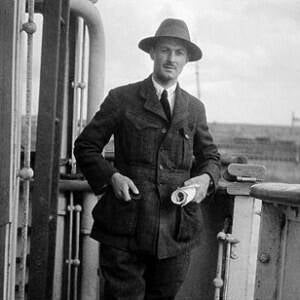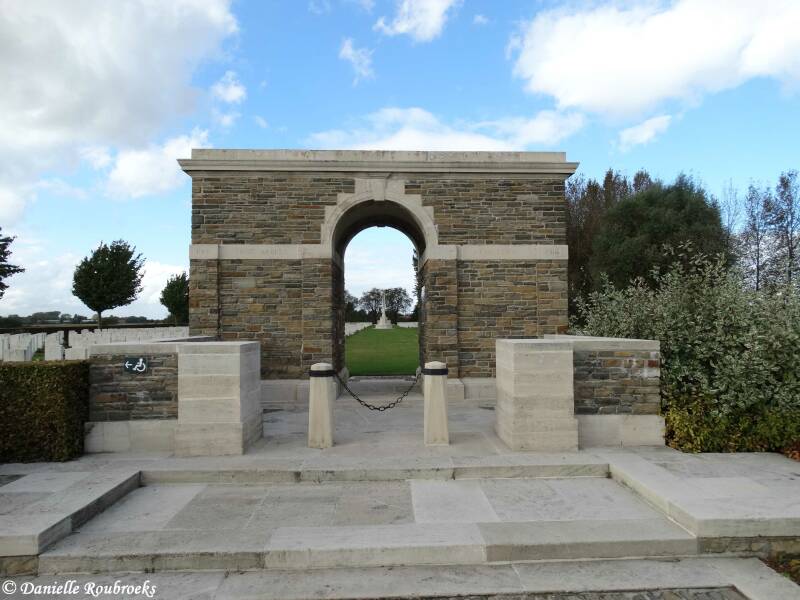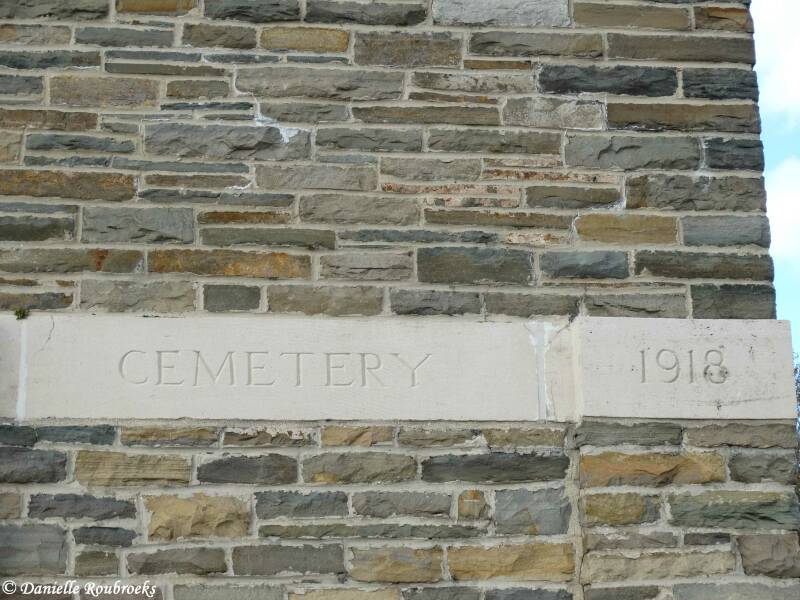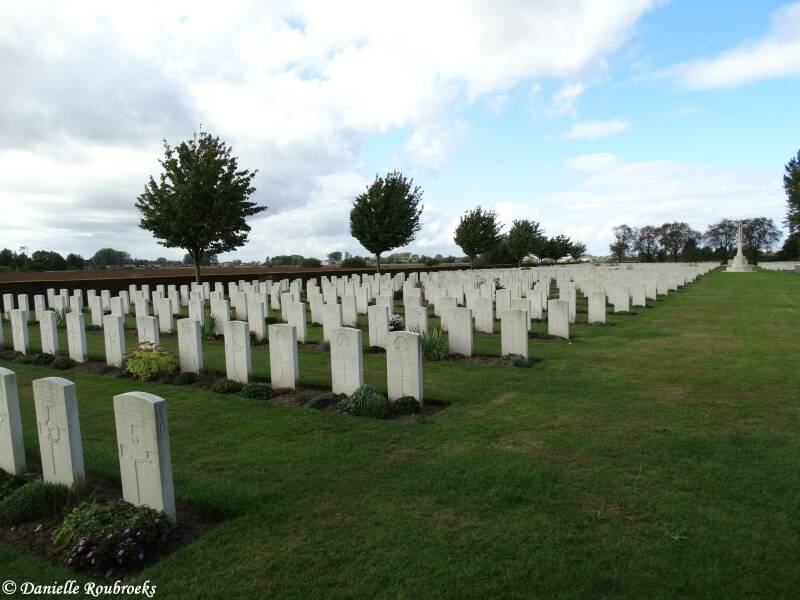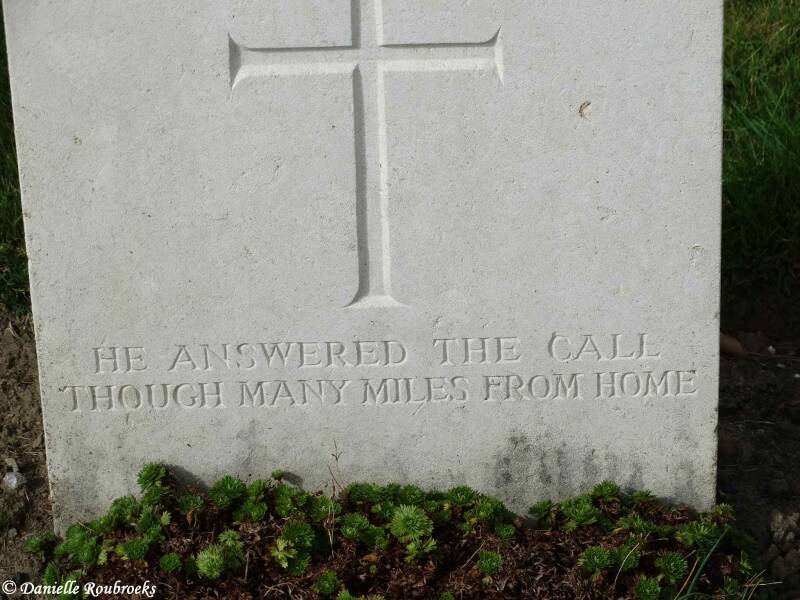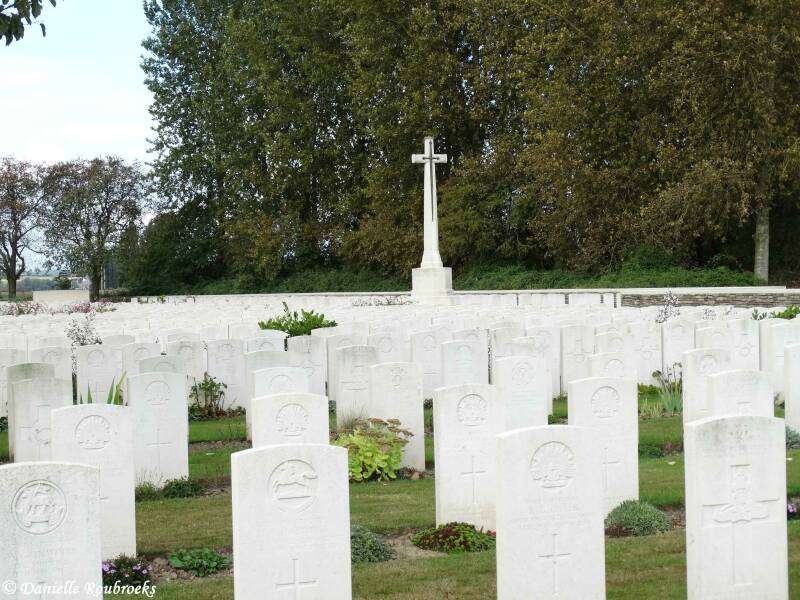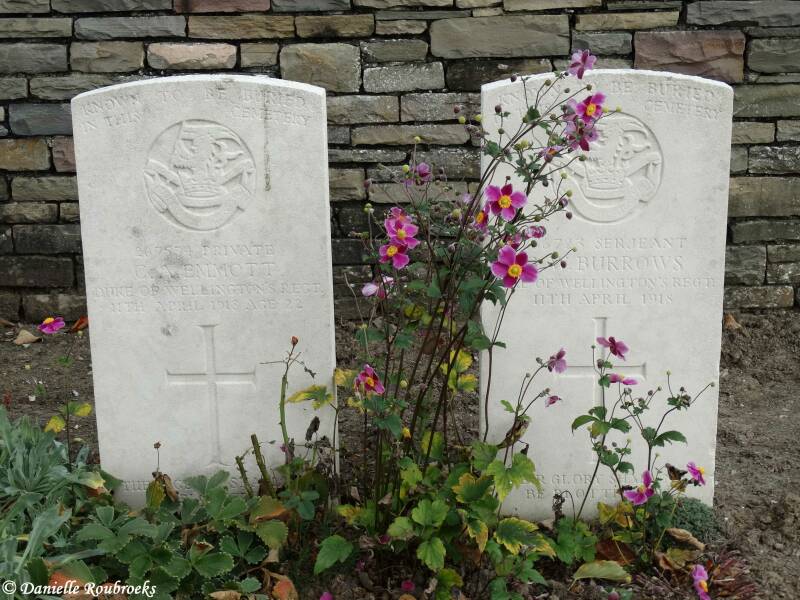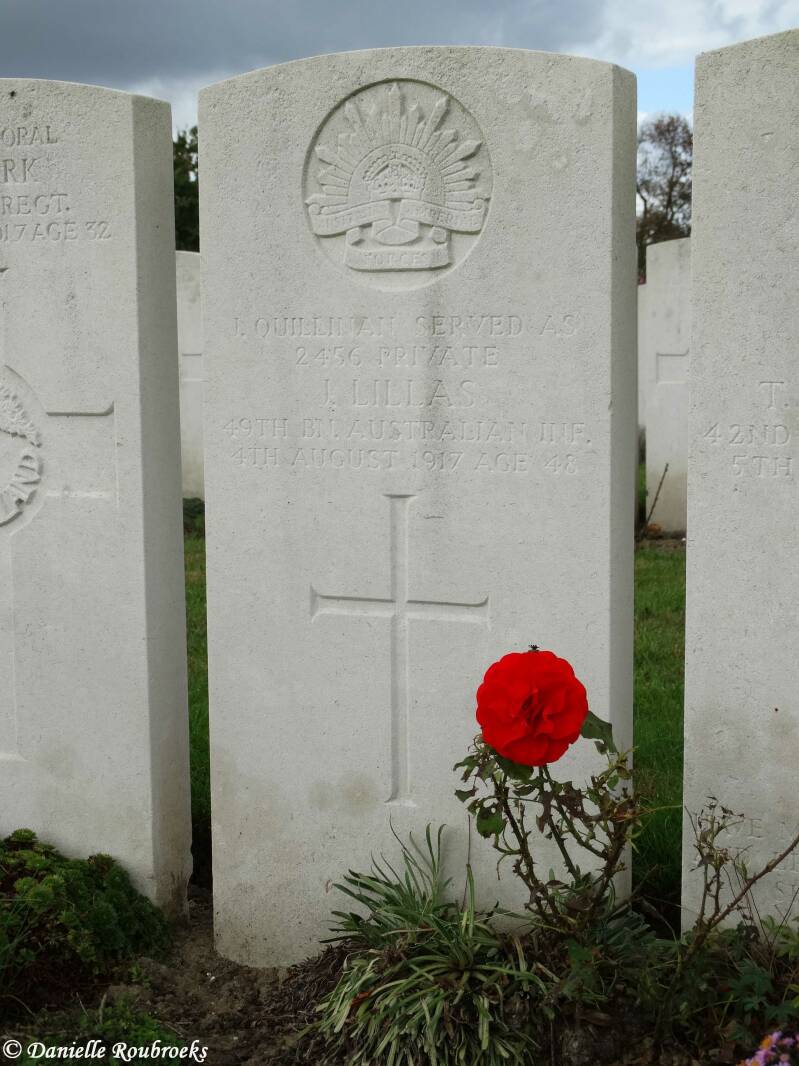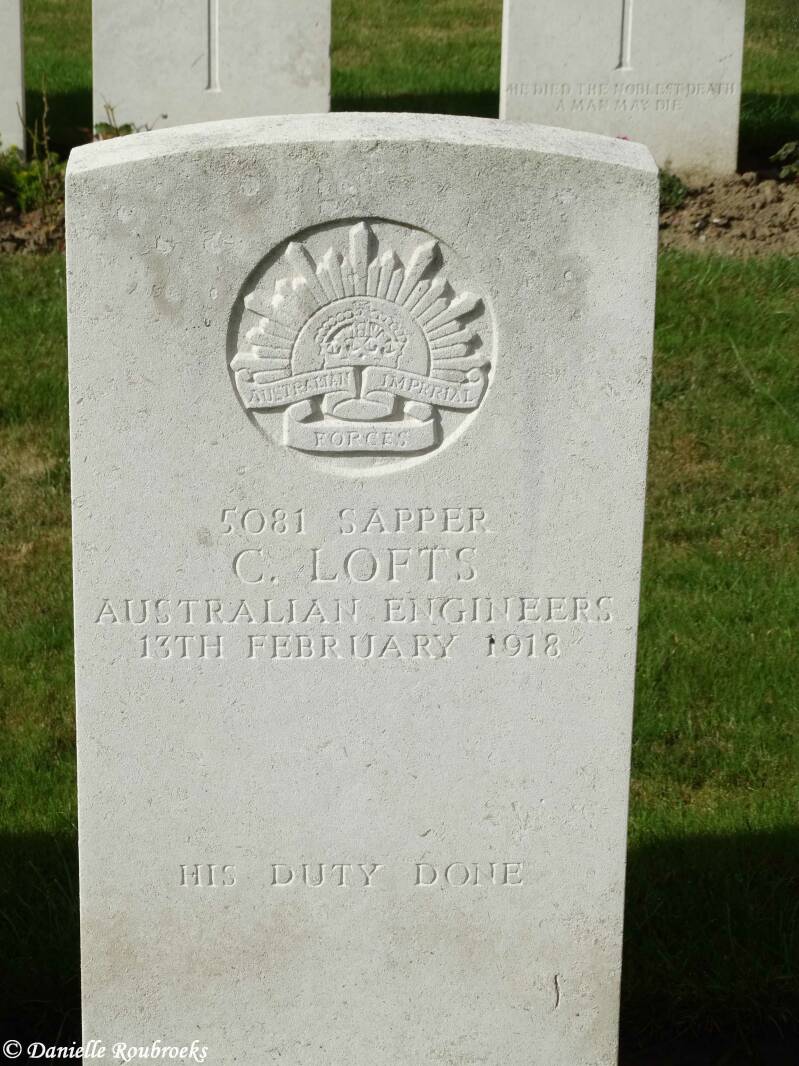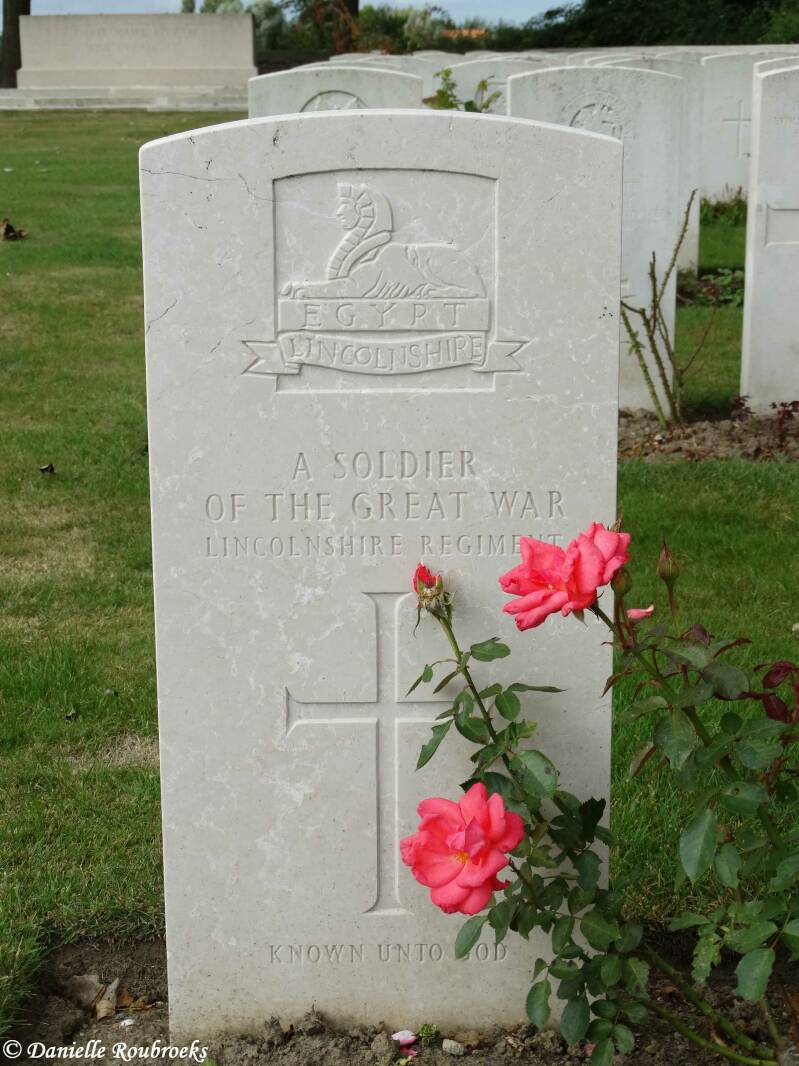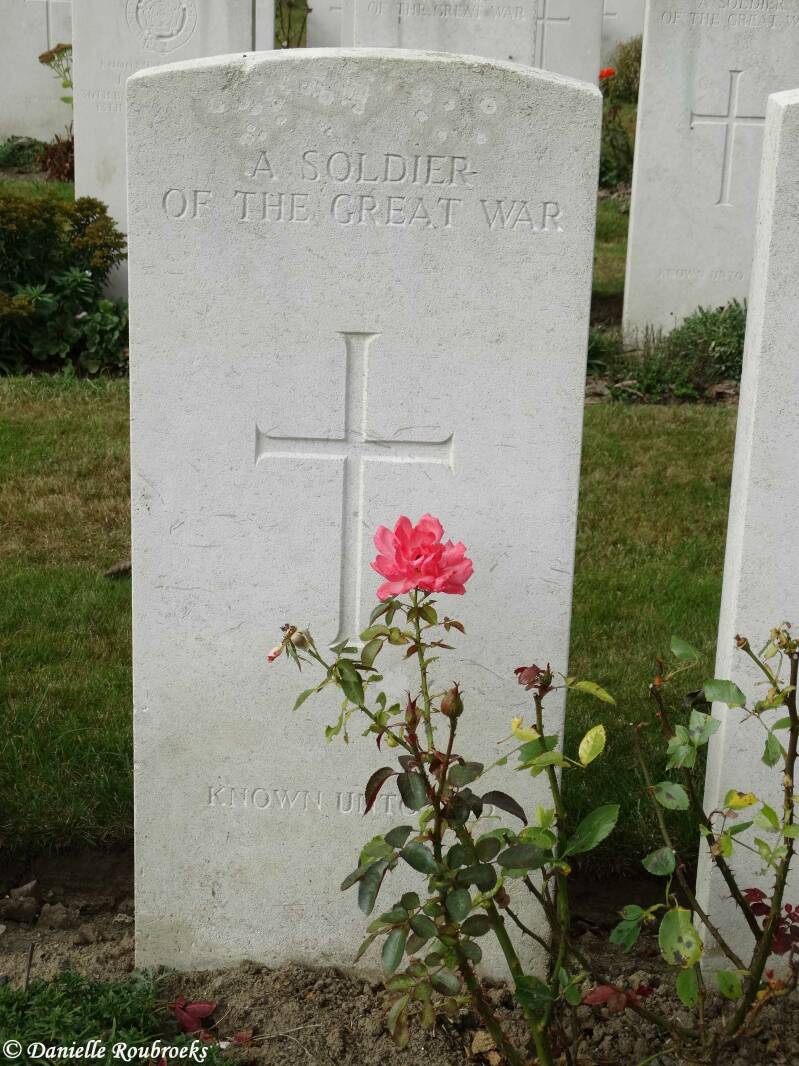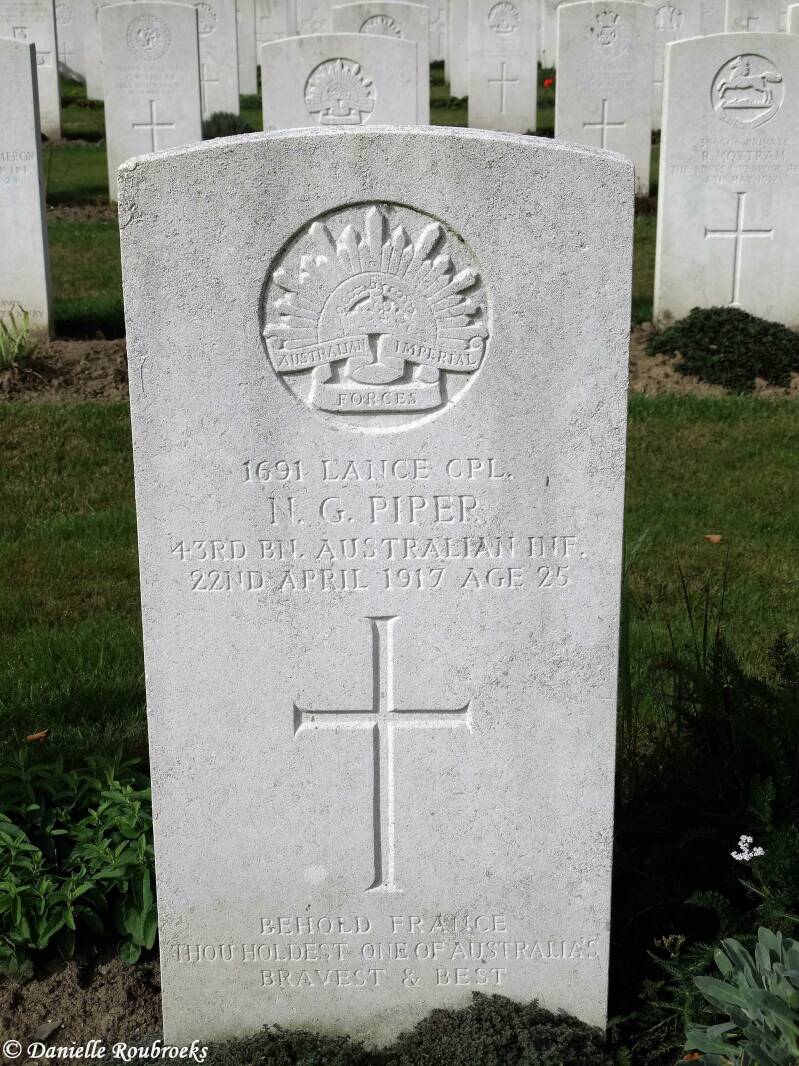Trois Arbres Cemetery, Steenwerck
Historical Information (Source: CWGC)
Steenwerck village remained untouched for much of the First World War, but on 10 April 1918 it was captured by the Germans and remained in their possession until the beginning of October. Trois-Arbres passed into German hands a day later than Steenwerck, after a rearguard defence by the 34th Division. The site for Trois Arbres Cemetery was chosen for the 2nd Australian Casualty Clearing Station in July 1916, and Plot 1 and the earlier rows of Plot II, were made and used by that hospital until April 1918. A few further burials were made in the cemetery after the German withdrawal at the end of 1918 and after the Armistice, over 700 graves were brought into it from the battlefields of Steenwerck, Nieppe, Bailleul and Neuve-Eglise.
There are now 1,704 Commonwealth servicemen of the First World War buried or commemorated in this cemetery. 435 of the burials are unidentified but there are special memorials to ten casualties known or believed to be buried among them. The cemetery was designed by Sir Herbert Baker.
Served with
- United Kingdom (570)
- Australian (470)
- New Zealand (212)
- Canadian (21)
- Indian (1)
- South African (1)
Served in
- Army (1270)
- Air Force (4)
- Navy (1)
Lieutenant SCHULER, Philip Frederick Edward
Died 23/06/1917 - Aged 27
3rd Div. Train. Australian Army Service Corps
Son of G. F H. Schuler and Sarah Deborah Strahan Schuler, of 10, Lisson Grove, Hawthorn, Victoria, Australia. Native of Melbourne.
As a correspondent for The Age newspaper, Phillip Schuler witnessed the landing at Gallipoli and several of the battles that followed. His writing and photographs from this time still shape our understanding of these events. Although Schuler accompanied the Australian Imperial Force (AIF) as it headed to war, he was not an official war correspondent appointed by the government. This meant he did not always have access to the Australian forces. Yet his curiosity saw him go to great lengths to capture their stories. At times he had to find his own information sources, transport and observation points to watch events unfold. Despite his success as a war correspondent, Schuler then surprised many by enlisting in the AIF in April 1916. He explained his decision in a letter to the British General Ian Hamilton: ‘Once the story of Anzac had been told there seemed no reason for my remaining while others died fighting’.
After basic training in England, Schuler sailed to France in November 1916 and served on the Western Front, before being promoted to the rank of lieutenant.
On 23 June 1917, Schuler was fatally wounded in Belgium.
Plot I. Row S. Grave 43.
INSCRIPTION:
"UNTIL THE DAY BREAK AND THE SHADOWS FLEE AWAY"


